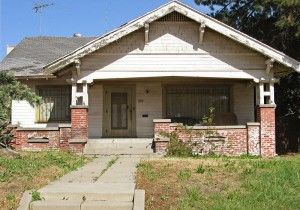FHA subprime defaults hit 9% in California
By Chriss Street
The American taxpayer is about to be saddled with another multi-billions bailout of subprime mortgage loan losses from the stealth Federal Housing Authority lending program that has been offering ultra-low 3.5 percent down payments since 2009. Delinquency rates are already at 9 percent in California and expanding rapidly across the United States.
Subprime lending drove the U.S. housing bubble from 1998 until its collapse beginning in 2007. Since that time, real estate prices have fallen by 35 percent across the United States. Subprime was first hailed for its expansion of the number of people who could qualify for a mortgage. But many of those borrowers fudged on their income and net worth levels in order to borrow more than their true incomes would allow them to repay.
Since the bubble burst and many sub-prime borrowers defaulted, the U.S. government has provided bank bailouts, a deficit-spending stimulus that will double the national debt from $9 trillion in 2007 to $18 trillion next year.
A Rasmussen poll taken just after the recent JP Morgan Bank derivative fiasco reported that 71 percent of Americans say the government should let banks that get into financial trouble be required to fail. Banks are still blamed for causing the housing crash by lowering traditional mortgage loan requirements of 20 percent down payment and a 680 FICO credit score.
Taxpayers liable
Unfortunately, taxpayers are about to learn they are increasingly liable for another multi-billion-dollar subprime bailout. The U.S. Department of Housing and Urban Development website trumpets: “FHA Loans Help You.” In smaller print, that help is described as insuring your loan so your lender can offer you mortgage down payments of 3.5 percent of the purchase price that includes closing costs and fees in the loan. And the FHA will allow you to buy a home, remodel and refinance your existing home or convert your equity into cash through a reverse mortgage if you are 62 or older.
All this FHA hoopla sounds a lot like subprime lending, because it is subprime lending!
Any bank that made this type of loan on its own would be required by regulators to classify the loan as a non-conforming investment and reserve approximately 25 percent of the amount of the loan in cash as protection against a potential subprime borrower default. But the beauty of the FHA insured loan program is that banks collect fees for the risk-free processing of loans, and then sell the loans to Federal National Mortgage Corporation (Fannie Mae) or The Federal Home Loan Mortgage Corporation (Freddie Mac) for another profit.
Of course, both of these government sponsored enterprises have been operating in conservatorship (nice word for bankruptcy) since September 6, 2008 as a result of subprime loan losses. Then-Treasury Secretary Henry Paulson said the next day:
“I attribute the need for today’s action primarily to the inherent conflict and flawed business model embedded in the GSE structure, and to the ongoing housing correction.”
That correction has resulted in 5 million completed foreclosures and another 8 million mortgages that are more than 30 days delinquent or in foreclosure.
Down payments
The Center for Responsible Lending, founded by ACORN, recently published a study reporting that requiring a 20 percent down payment would prevent 60 percent of all FHA borrowers from qualifying for a residential mortgage. To analyze what it would take for a typical FHA borrower to qualify for a traditional mortgage, CRL selected an average family household led by a police pfficer, a teacher and tirefighter. Relying on the Department of Labor Occupational Employment wage scales, assuming the average family could dedicate half of their 5.2 percent average savings toward a down payment on a 6 percent loan for an average hous,. CRL estimated the typical American family would have to save for 14 years to afford a traditional 20 percent down payment loan.
Real estate experts have warned for years about the potential dangers of FHA mortgages because the 1 percent loan fee, 0.5 percent insurance costs and 6 percent real estate sales commission are all rolled into a 3.5 percent down payment. Lenders refer to this as “hiding of the pickle,” because the borrower already has 4 percent negative equity when the mortgage is funded.
Falling prices
As home prices have continued to fall since 2009, most FHA borrowers are now saddled with mortgages that are substantially greater than the fallen value of their homes. Many of these FHA borrowers are public-sector police officers, teachers, firefighters and others who expected to enjoy lifetime employment. But local governments have cut 482,000 jobs since the beginning of 2009 and public sector layoffs are accelerating in the nation’s weakest real estate markets of California, Florida, Illinois, New York, Texas and New Jersey.
The Obama administration’s Office of Management and Budget estimated in October 2011 that FHA’s $4.7 billion capital reserves will be wiped out this year, forcing the FHA to seek at least $700 million bailout from the U.S. Treasury. Americans are justifiably angry at being required to bailout the banks’ irresponsible subprime lending. Think how angry they are going be this election season, when they have to bailout the government’s irresponsible subprime lending.
Feel free to forward this Op Ed and follow our Blog at www.chrissstreetandcompany.com.
If you Chriss Street to speak to your organization, contact [email protected].
Chriss Street’s latest book: “The Third Way,” now available on www.amazon.com
Related Articles
Redevelopment Agencies on the Brink
JUNE 20, 2011 By STEVEN GREENHUT Hours before the midnight Wednesday deadline for passing a state budget, legislative Democrats rammed
Legislators debate tax reform
SEPT. 3, 2010 By KATY GRIMES The state is still operating without a budget, but not all the legislative budget
Lockyer: Pensions Won't “Crush Govt.”
MARCH 17, 2011 BY WAYNE LUSVARDI Bill Lockyer’s recent harsh criticism of a bluntly honest Little Hoover Commission report, “Pensions



